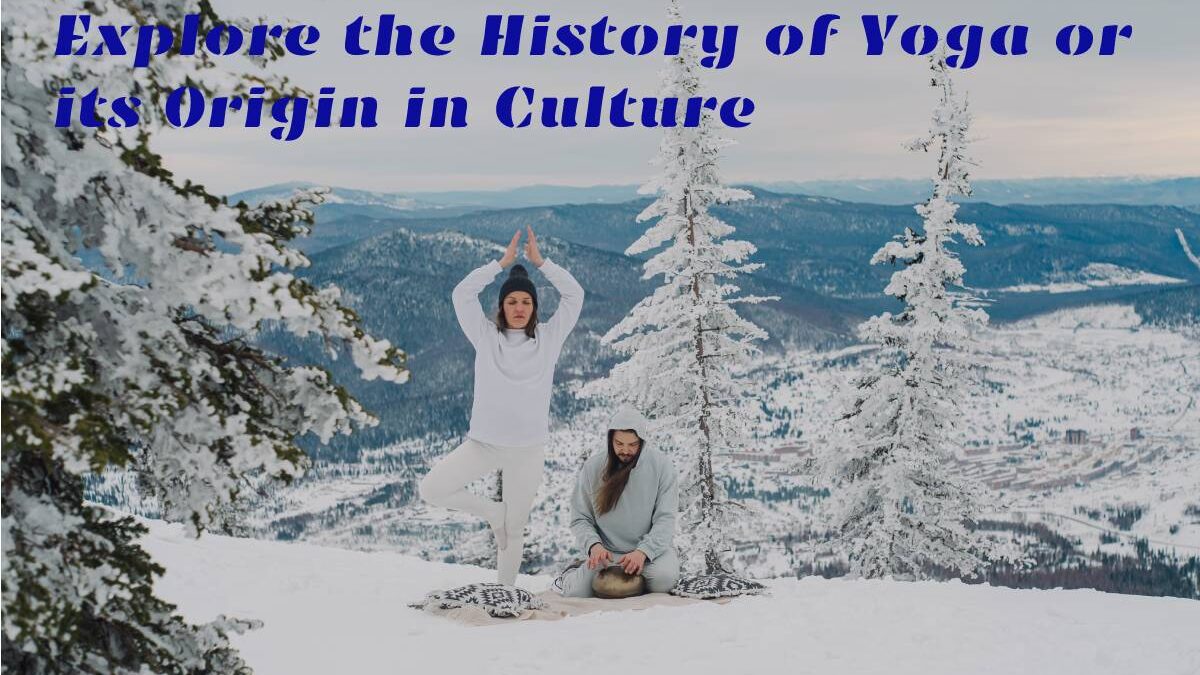The Sanskrit word Yuj, which means “to link” or “to unite,” is the root of the English word yoga. This connection is more than just bending to touch your toes with your nose resting on your knees! The unity being discussed is between your mind and body, and you are blending in with the natural world and your surroundings. And ultimately, the integration of your consciousness with the collective mind.
History of Yoga
Pre- and Vedic Period I
The Rigveda, Samaveda, Yajurveda, and Atharvaveda are the four Vedas that make up the hierarchy of Vedic knowledge. Ayurveda, Artha Veda, Dhanur Veda, and Gandharva Veda are the following four Upa Veda or sub-Vedas. Six pangas, or parts, follow next: Shiksha, Kalpa, Vyakarana, Niurka, Chanda’s, and Jyotisha. These are further divided into six sub-components: Vedanta, Yoga, Veda, Sankhya, and Nyaya.
The Rig Veda, an old Indian literature that goes back to roughly 1500 BC, contains the earliest known use of the word “yoga.” Again, from 1200-1000 BC, the Atharva Veda refers to the significance of controlling one’s breath. It is challenging to determine specific dates because this History of Yoga was known and performed throughout those earliest phases of civilization.
Early Classical era
During this period, the Upanishads emerged. Through their teachings, they elaborate on the inner workings of the mind and spirit to reveal the meaning buried in the Vedic texts, the actual History of Yoga. They promote mantra recitation and meditation as means of achieving Nirvana. There are 20 yoga Upanishads among the 108 Upanishads. Many yogic practices are discussed, including pranayama (breathing exercises) and pratyahara (withdrawal of the senses), as well as sound and meditation.
The Neoclassical era (500 BC to 800 AD)
A) The teachings of Lord Mahavira and Lord Buddha laid the early foundation History of Yoga Sadhana. Lord Buddha spoke about precise postures and concentration to achieve enlightenment, whereas Lord Mahavira spoke of attaining salvation and freedom through meditation.
B) The Bhagavad Gita was also created during this time. This text represents a conversation between Prince Arjuna and Lord Krishna (global consciousness) (human consciousness). The Lord describes Dharma, Karma Yoga (kind deeds), Bhakti Yoga (committed and compassionate acts), and Jnana Yoga in this passage (knowledge).
Patanjali’s Yoga Sutras were referenced in the finger actions of nata dances. Later, martial arts began to incorporate these.
Veda Vyasa also wrote a commentary on the Yoga Sutras around this time. In this passage, he has outlined the connection between the Samkhya school of philosophy, one of the six systems of Indian philosophy, and the yoga school of thought.
During this time, the significance of the mind in the History of Yoga was highlighted.
The post-classical era Transform the History of Yoga
Many sages and philosophers of this time, including Adi Shankaracharya, adopted and expanded upon yoga teachings and practiced them to help develop and continue Raja Yoga and Jnana Yoga. One can obtain Nirvana or liberation by following his instructions and engaging in yogic practices like Jnana Yoga. Additionally, it was believed that meditation was essential for improving mental clarity.
To the study of yoga, Tulsidas and Purandar Dasa also made contributions. This time saw the rise in the popularity of hatha yoga. Today, we perform a majority of Hatha yoga asanas.
Swami Vivekananda was responsible for introducing yoga to western nations throughout the Modern Period (1700–1900 AD).
Physical health was given a lot of attention in this place. Ramana Maharshi, Ramakrishna Paramhansa, BKS Iyengar, K Pattabi Jois, Paramhansa Yogananda, and Vivekananda all contributed to the advancement of raja yoga. By the middle of the nineteenth century, yoga had reached the West. At this time, Hatha yoga, Vedanta, and Bhakti were all in vogue.
Such was the magnificent and protracted voyage that yoga made to enter the twenty-first century! There have been many revisions and many contributors. Despite all, the goal of the History of Yoga is still to unite your soul, self, and the outside world.
Where did yoga Origin?
Over 5,000 years ago in northern India, yoga’s roots can be found. The Rig Veda, a collection of ancient religious books, is where the word “yoga” first appears. Four prehistoric sacred writings known as the Vedas were initially authored in Sanskrit. The Rig Veda, the first of the Vedas, is a collection of more than a thousand hymns and mantras that priests employed in the Vedic era. It is divided into ten chapters known as mandalas. Rishis (sages), who polished and improved yoga, recorded their beliefs and practices in the Upanishads, a massive compilation that contains more than 200 scriptures.
In addition to being one of Hinduism’s six philosophical schools, yoga plays a significant role in Buddhism’s meditation techniques. The Shri Yogendra Museum of Classical Yoga, the first museum in the world devoted to yoga, can provide you with further information about the History of Yoga.

